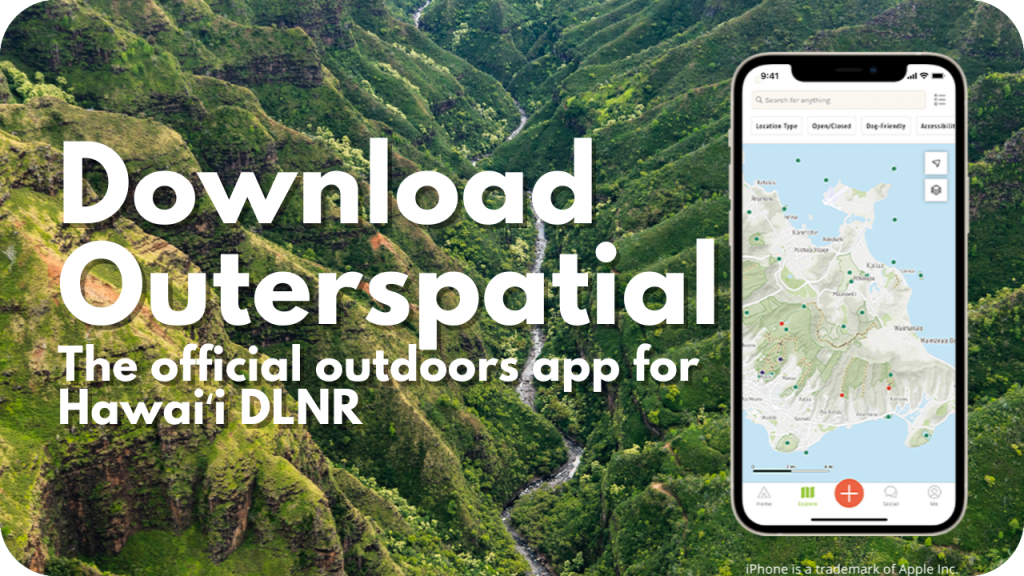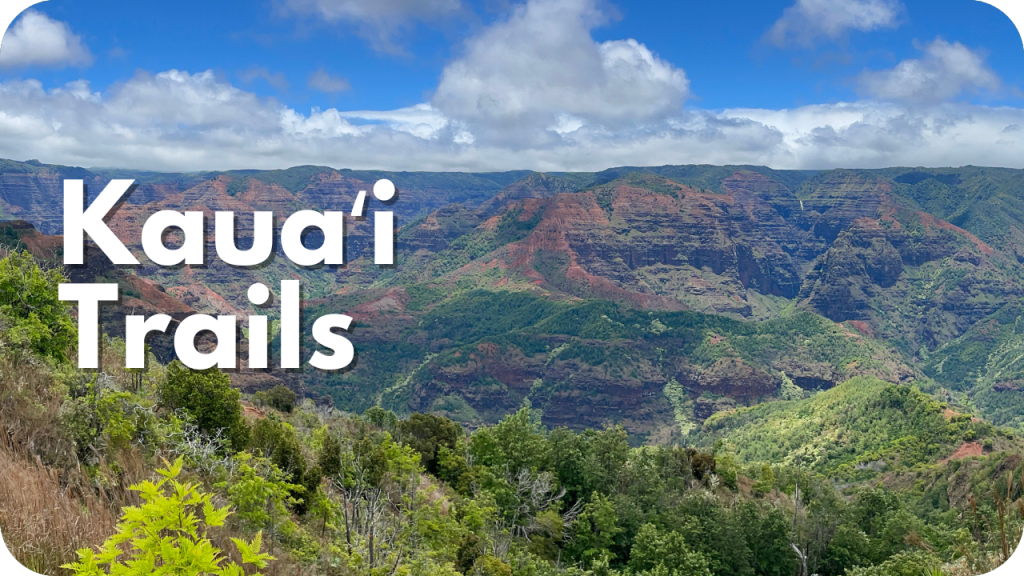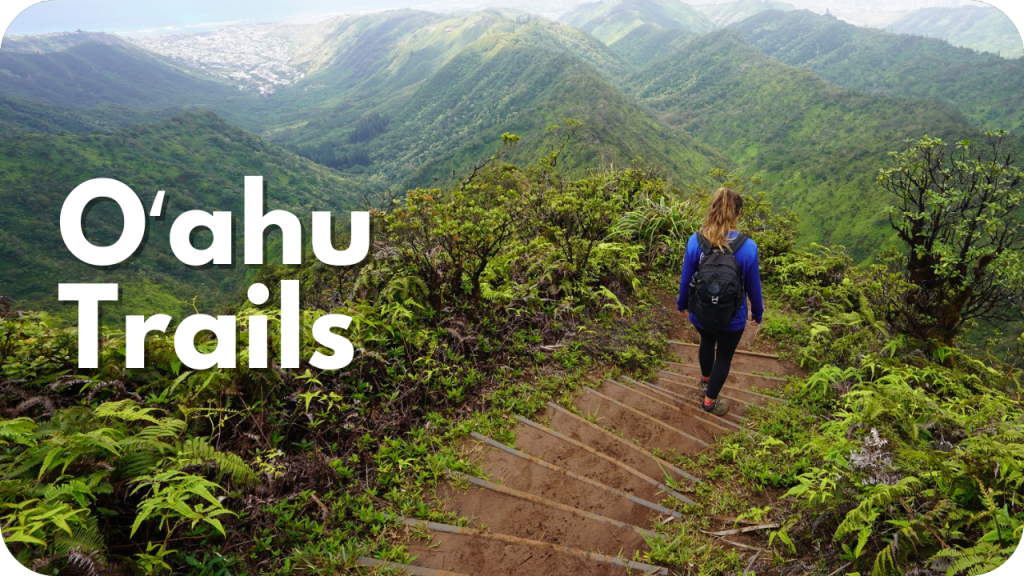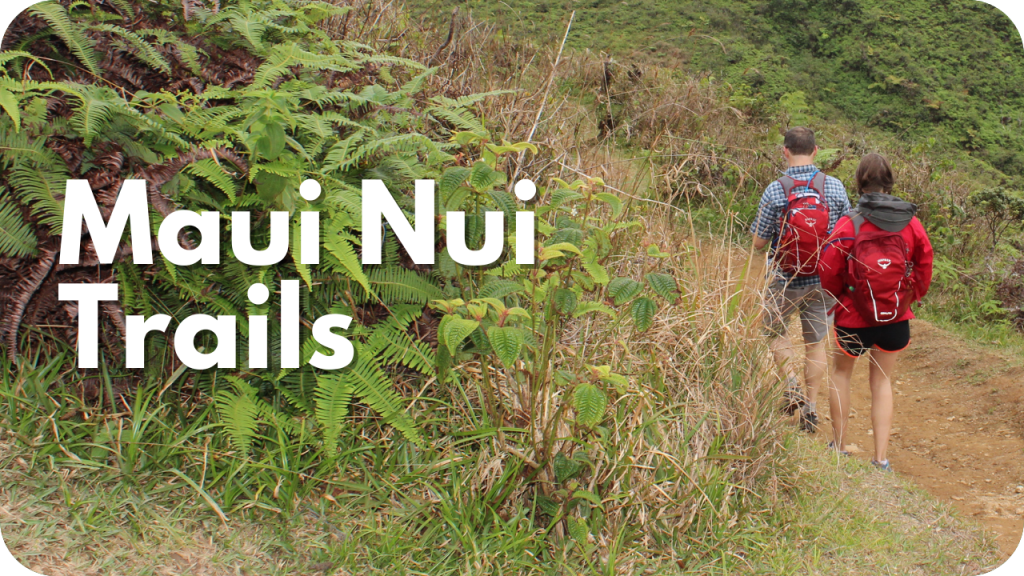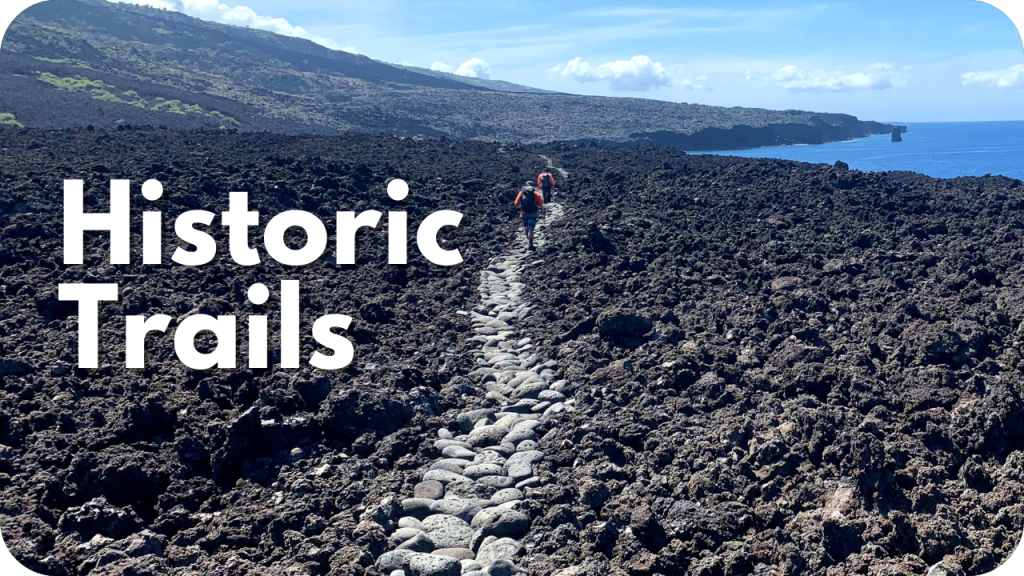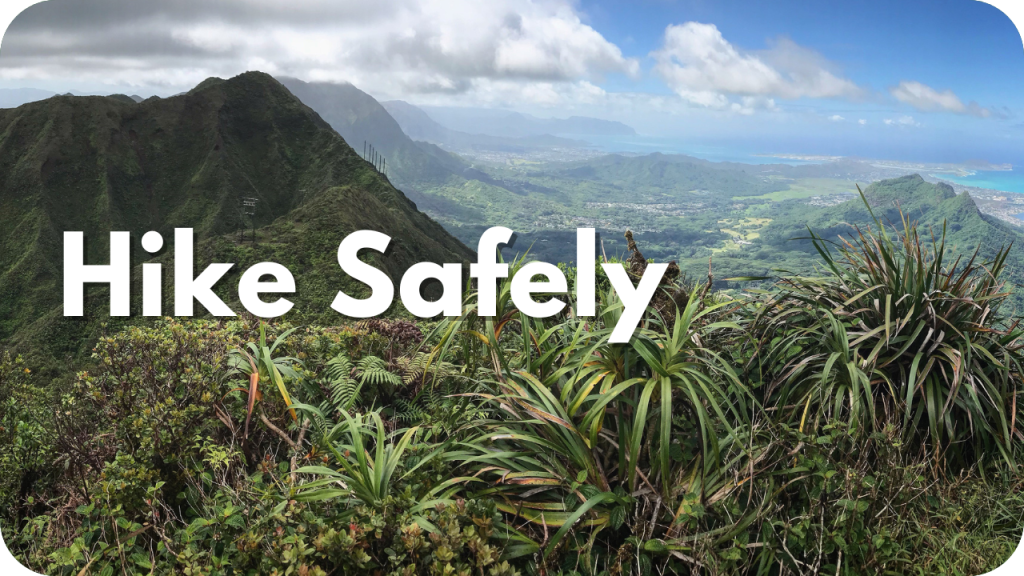Nā Ala Hele Trail & Access Program

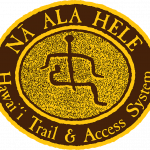 Nā Ala Hele is the State of Hawai‘i Trail and Access Program. The program manages trail access and conducts maintenance to provide important public services including recreational opportunities, experiences related to cultural history and historic trails, and economic opportunities where possible for commercial trail vendors. Nā Ala Hele trails are also important for access to natural areas for management, research, hunting, and wildfire response.
Nā Ala Hele is the State of Hawai‘i Trail and Access Program. The program manages trail access and conducts maintenance to provide important public services including recreational opportunities, experiences related to cultural history and historic trails, and economic opportunities where possible for commercial trail vendors. Nā Ala Hele trails are also important for access to natural areas for management, research, hunting, and wildfire response.
Below users can find official, legal trail information through our mobile app Outerspatial or our interactive map at hawaiitrails.ehawaii.gov (which also houses our Commercial Trail Vendor system). Additional programmatic information can also be found below, including documents for the Nā Ala Hele Advisory Councils. Users may also want to read the Nā Ala Hele program plan or find contact information for Nā Ala Hele program staff.
Find Trails
How to Hike
Nā Ala Hele Advisory Councils
The Nā Ala Hele Advisory Councils provide advice and assistance to the department in implementing the Nā Ala Hele Program. There are seven councils: a statewide council, and island councils for the islands of Kauaʻi, Oʻahu, Molokaʻi, Lānaʻi, Maui, and Hawaiʻi. Members of the advisory councils are appointed by the department chairperson and represent stakeholder groups including hikers, hunters, bikers, equestrian riders, off-highway vehicles, Hawaiian cultural representatives or practitioners, fishers, environmentalists, affected landowners, or other trail and access advocates.
Meeting documents for the Statewide Advisory Council are posted and archived below. Meeting documents of the island Advisory Councils can be found on the Kauaʻi, Oʻahu, Maui Nui (Molokaʻi, Lānaʻi, and Maui), and Hawaiʻi Island Nā Ala Hele pages.
Hike Pono
Hiking trails are how most people explore their public forests and other lands in Hawaiʻi. To be a pono hiker:
- Only use official trails found on our website or in the Outerspatial app. Unofficial trails are illegal and may harm native species habitat.
- Clean gear before and after hiking, and use boot brush stations. This helps avoid the spread of invasive seeds or diseases like Rapid ʻŌhiʻa Death.
- Stay on the trail. Shortcuts harm plants & cause erosion.
- Keep pets on leashes at all times. This protects your pet, wildlife, and other hikers.
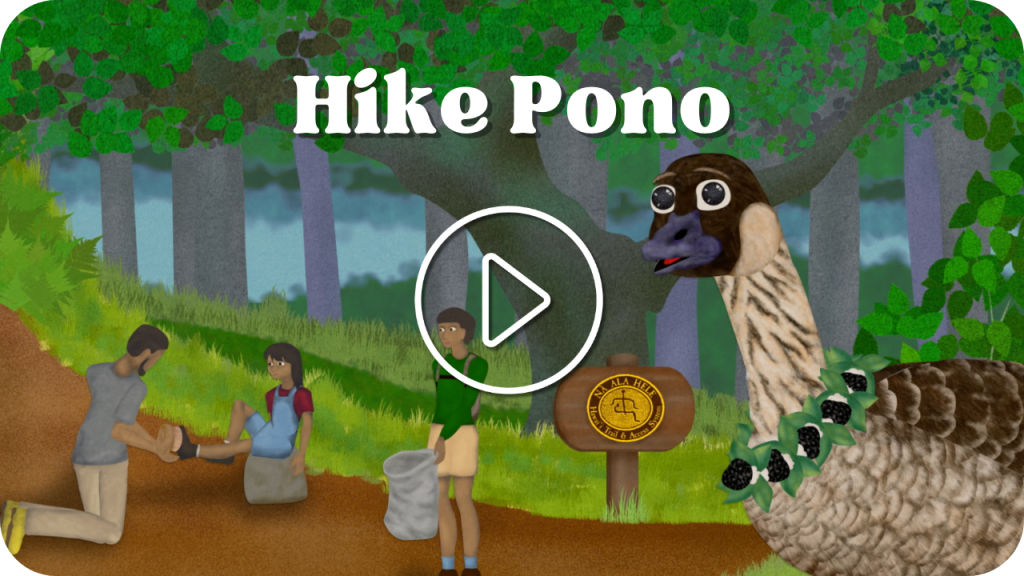
Click to watch a video with Pono the Nēnē
Keep your music in headphones rather than playing music out loud on speakers for everyone to hear. Playing loud music on trails is prohibited in Hawaiʻi. Others on the trail may want to enjoy the sounds of nature, and for good reason: hearing birdsong is good for your mental health.
If you are birding, follow our guidelines for Ethical Birding in Hawaiʻi and check out our Hawaiʻi Birding Trails portal to learn which birds you might see on which trails.
Most trails do not have dedicated parking areas, so remember to be kind to neighbors who live near trailheads. Don’t block their driveways or mailboxes when you park, and don’t use their hoses to wash your muddy boots.
Our forests are cultural spaces, so be respectful. Native Hawaiians consider mauka areas the wao akua (realm of the gods) and some trails may traverse wahi pana (places of special significance). Some trails are ancient and historic trails used by Native Hawaiians and are protected for cultural value and use.
Make sure you hike safely: Know your route before you go and check the description to see if it matches your physical limits. Tell someone your hiking plans and when you expect to return so they can call for help if you don’t return. Take a fully-charged cellphone with you, but be aware you may not have service along the trail. Check the weather before you hike, and take sufficient food, water, sun protection, rain protection, and a first aid kit. Some of our trails go through Public Hunting Areas, so be aware that you may cross paths with hunters and dogs, and consider wearing blaze orange. You can read our Hiking Saftey brochure for more details.
To learn more about responsibly engaging with nature, visit our Be Pono Outdoors page.
Hike Safely
Before You Go:
- Get Information: Prepare your hiking route. Maps and directions are available through this website. If using a trail not shown on this site or map links, or want more information, contact us.
- Inform others: Tell someone of your hiking plans including the trail name, location, and your estimated time of return.
- Assess your capabilities: Be aware of your physical limitations, skills, and energy levels.
- Check the weather forecast for the day: If a storm is forecasted, consider hiking on another day – or select trails in dryer areas.
- Carry a small pack with water: with some basic first aid materials, energy snacks, cell phone, and plastic garbage bag (for either collecting rubbish or to use as a rain gear).
- Wear sturdy and comfortable shoes with good traction: This will make the hike fun for everyone, and improve your hiking skill and safety.
When You Are Out There:
- ALWAYS STAY ON SIGNED AND MANAGED TRAILS! Trails and access roads on this site are maintained and designated for public use. Hiking and leaving a maintained trail is dangerous (i.e., hiking on adjacent ridgelines, gulches, or cliff climbing etc.).
- Pay attention: to posted warning and management signs.
- If the direction of the trail looks confusing: go back and start over.
- Do not hike alone: consider hiking with a group of people.
- Keep track of time: by allowing sufficient time to return before dark.
Resources:

